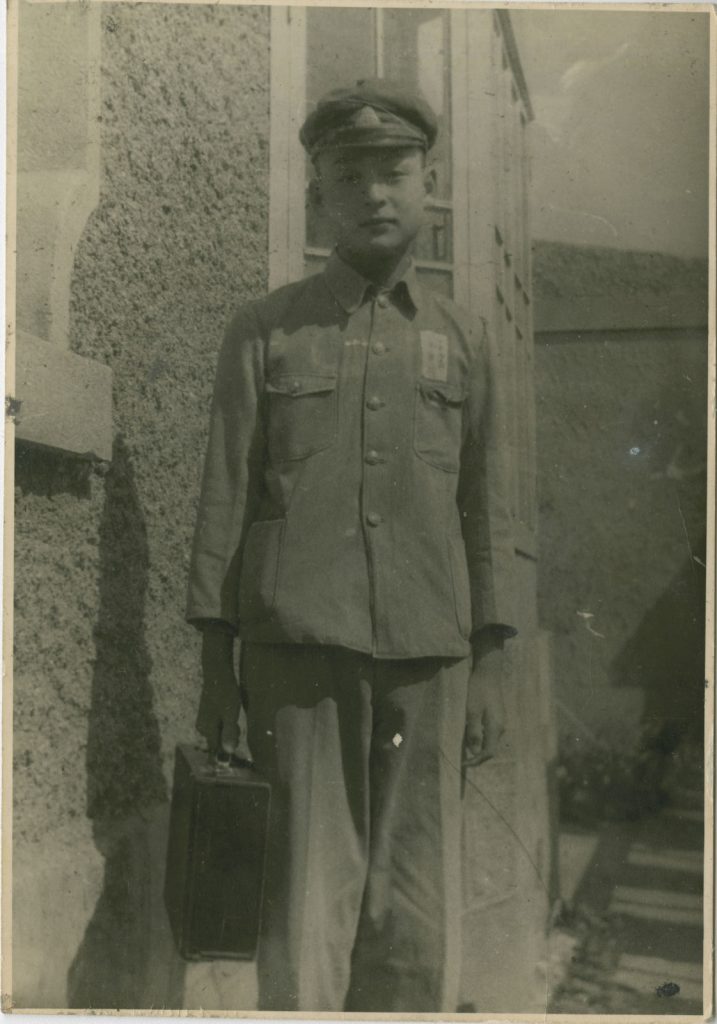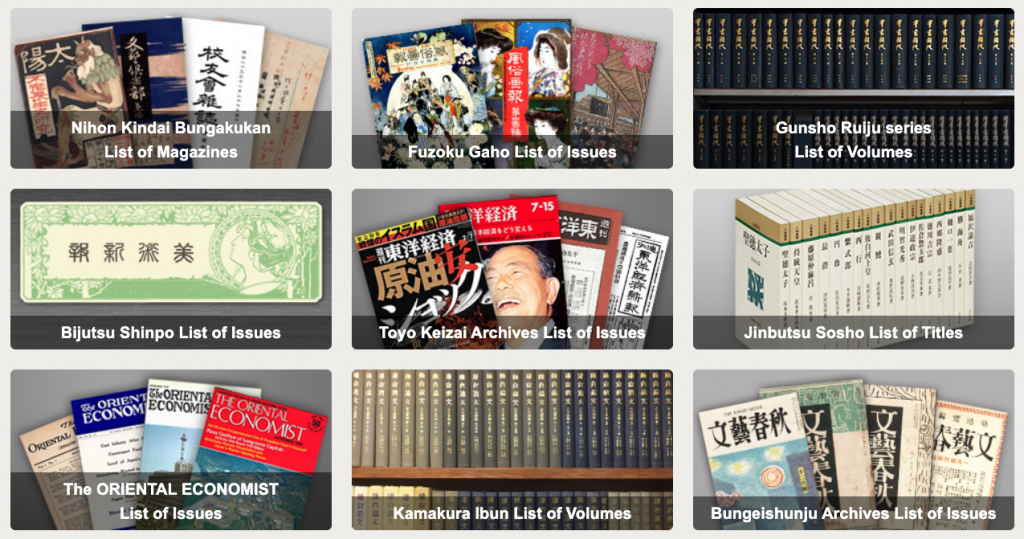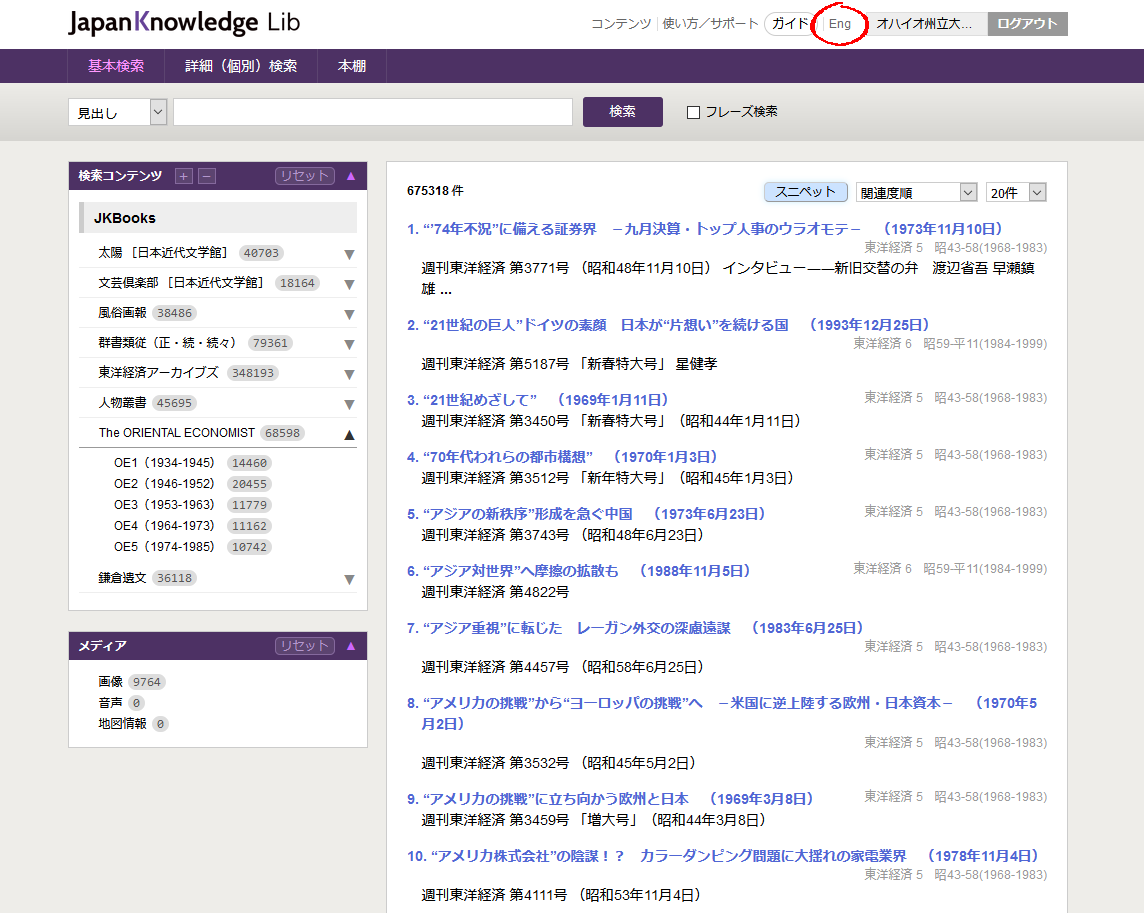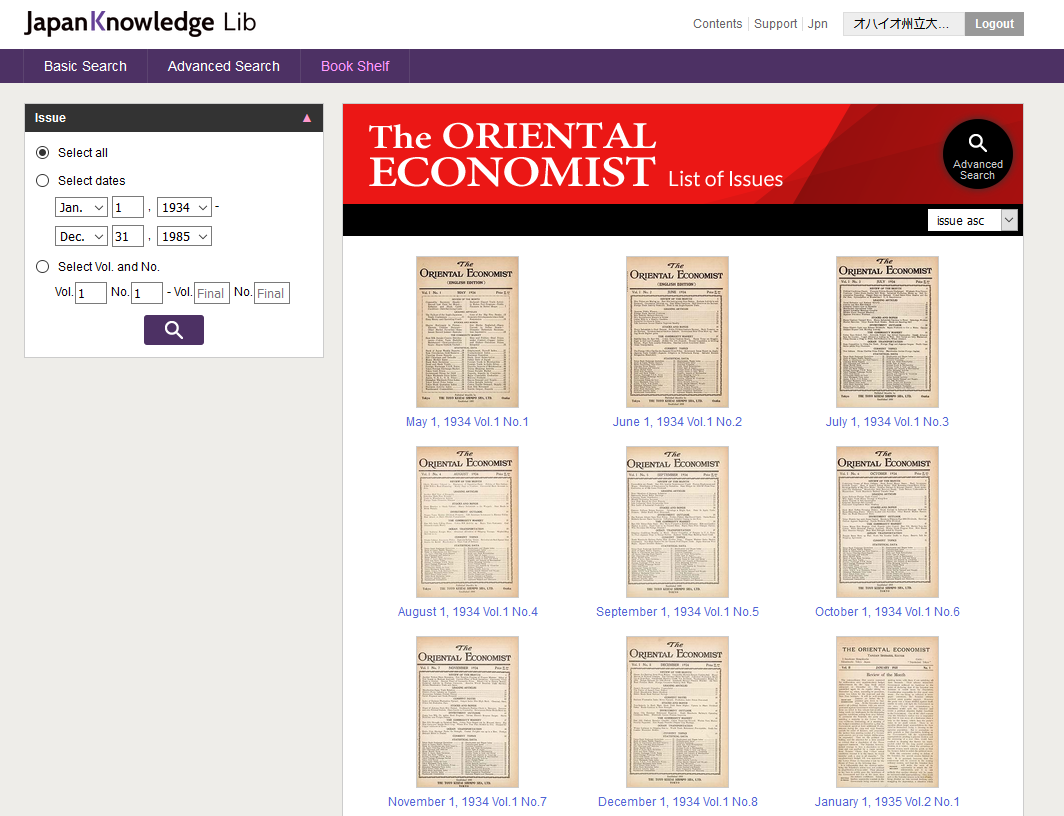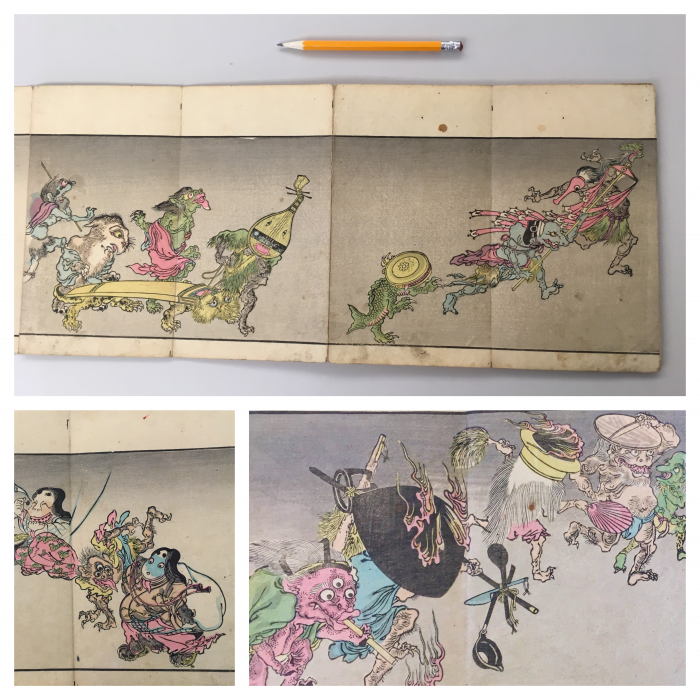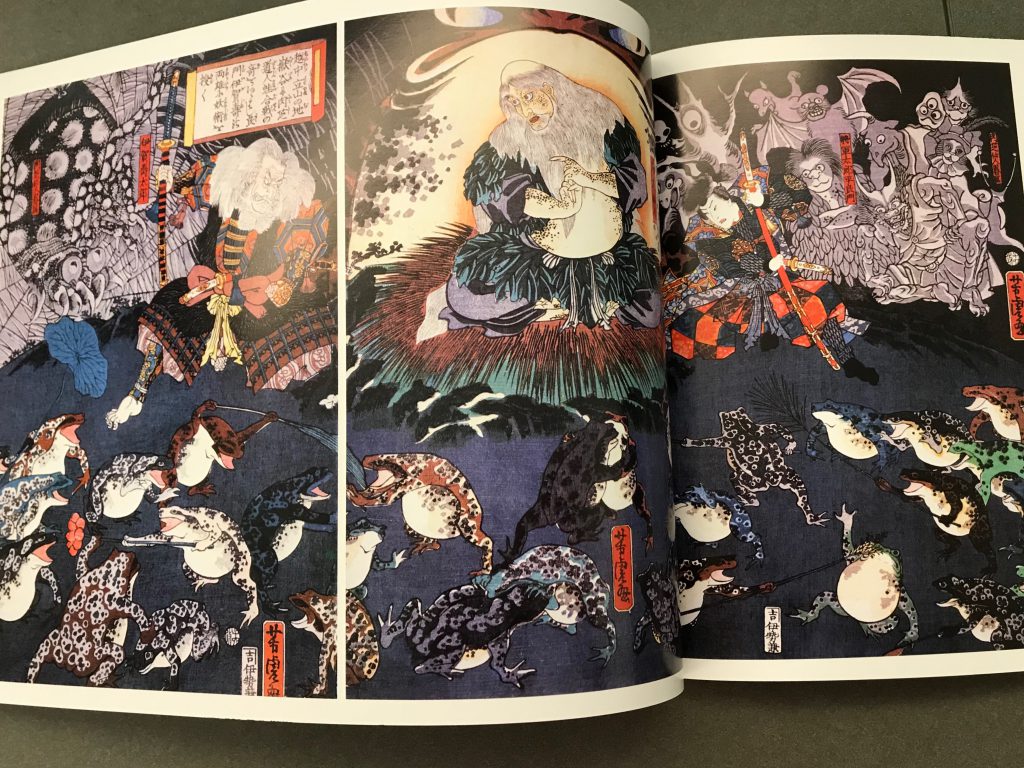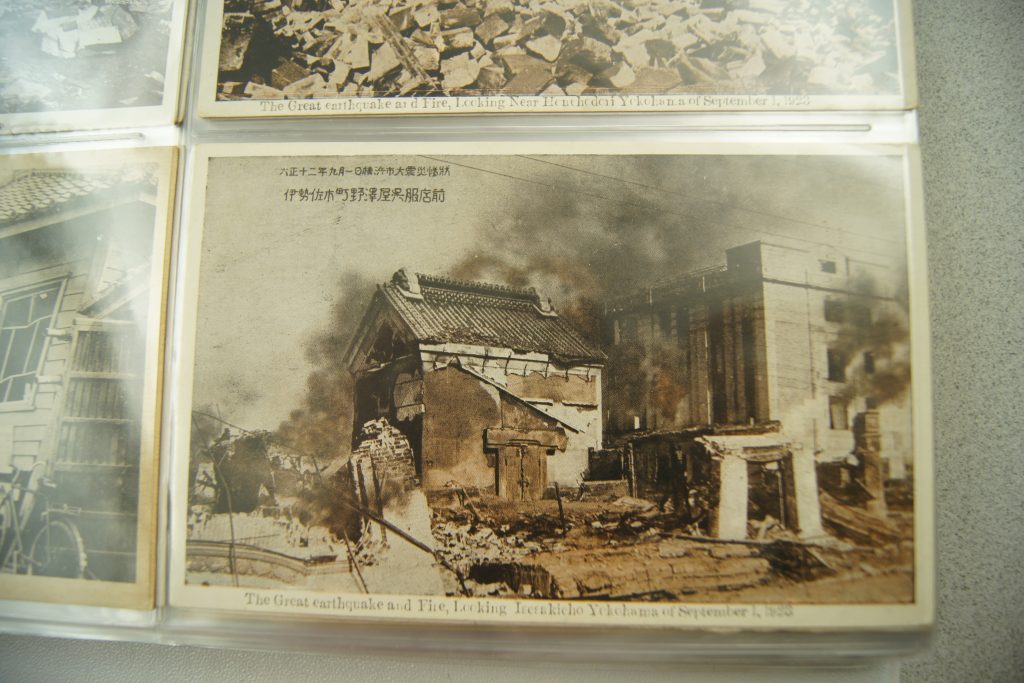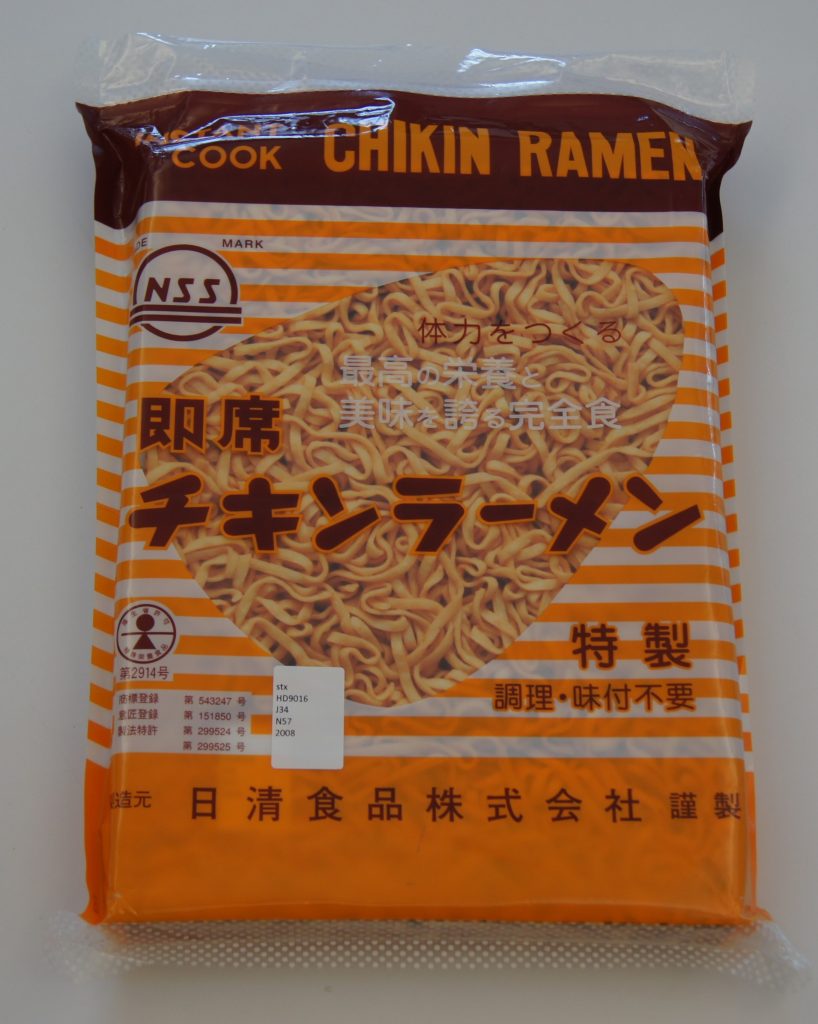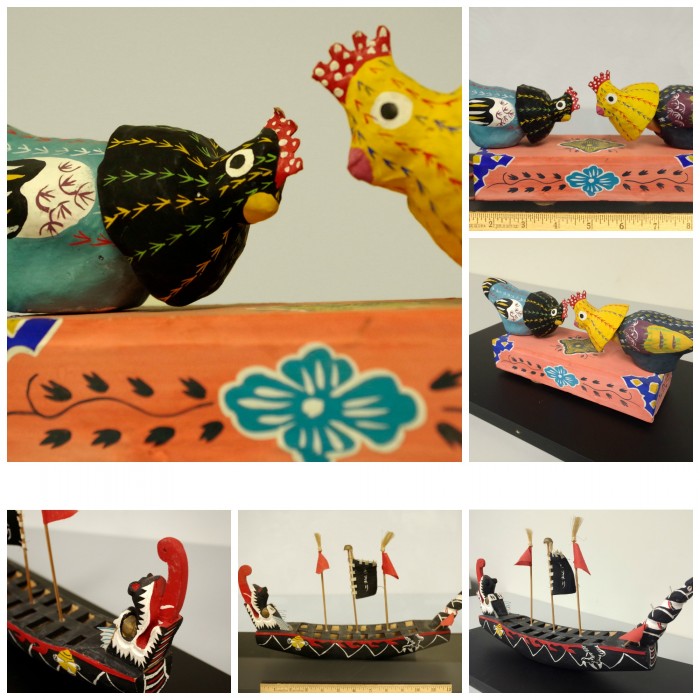
Three prints by Tsuruya Kokei. From the “Five Styles of Banzai-Ukiyoe” series.
The Ohio State University Libraries have acquired a new trio of Japanese woodblock prints, or hanga, now in the care of the Rare Books & Manuscripts Library (RBML). Those with an interest in traditional Edo and Meiji era ukiyo-e prints may find these works interesting, as they were created by the postwar artist Tsuruya Kokei (弦屋光溪, born 1946). All very recent works, the above prints are dated 2020, 2019, and 2018 (left to right). Known for his striking portraits of Japanese kabuki actors, Kokei has created a number of prints that echo in modified style the works of the mysterious yet recognizable Edo-period kabuki printmaker Sharaku (東洲斎 写楽, Tōshūsai Sharaku). While Sharaku’s prints spanned a period of just ten months (from 1794 to 1795), they formed a lasting impression as a dynamic and nonidealized collection of famous theater actors.
Like the early twentieth century shin-hanga (新版画) artists who mimicked the workflow of traditional ukiyo-e masters, Kokei produces all of his work himself, from the design phase, to cutting the woodblocks, and then finally creating the prints. For the vast majority of his prints, Kokei uses very thin and fragile Japanese papers such as ganpishi (雁皮紙), which allow his works to possess both a unique visual quality while demonstrating his impressive skills as a craftsman.
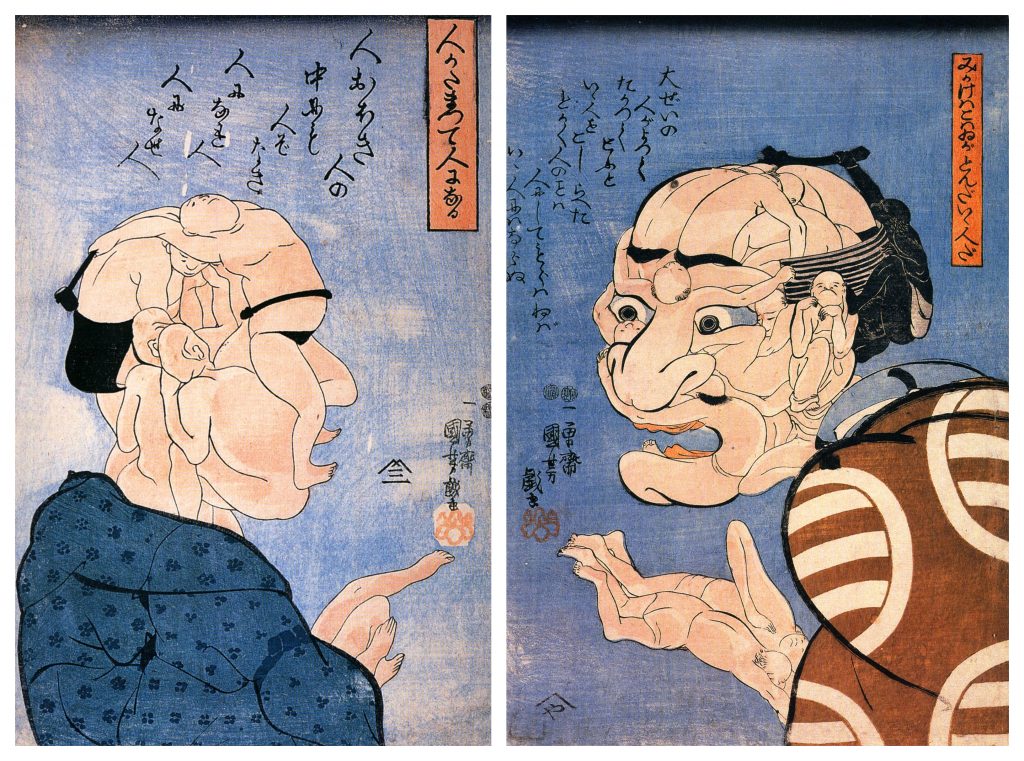
Yose-e by Kuniyoshi (1798-1861). Image courtesy of Wikimedia.org.
Kokei is associated with the prestigious Kabuki-za theater in Tokyo, where he sells limited amounts of his original works. Among the selection now housed in RBML is a 2020 homage to the prolific Edo artist Utagawa Kunisada (歌川 国貞, 1786-1865). A successful print designer recognized for his portraits of kabuki actors (yakusha-e) and female beauties (binjinga), Kunisada is famous as well for his more playful or humorous prints (asobi-e) of people and animals. Kokei’s prints are also evocative of Utagawa Kuniyoshi (歌川 国芳, 1798-1861), whose humorous prints often featured men’s faces, comprised of bodies, or an assemblage of cats in an array of satirical positions. A quick study of these playful yose-e (寄席絵), or “gather together pictures,” certainly reveals the inspiration behind Kokei’s ironic twenty-first century pictures featuring cats, kabuki artists, and a strange blue face comprised of human bodies!
If you wish to view these or other impressive works of Japanese art held in RBML, please contact OSU’s Japanese collections manager Dr. Ann Marie Davis (davis.5257@osu.edu).
Additionally, OSU Libraries holds many circulating volumes on related Japanese artists and woodblock prints. I have listed a sampling below. Please check them out if you are interested!
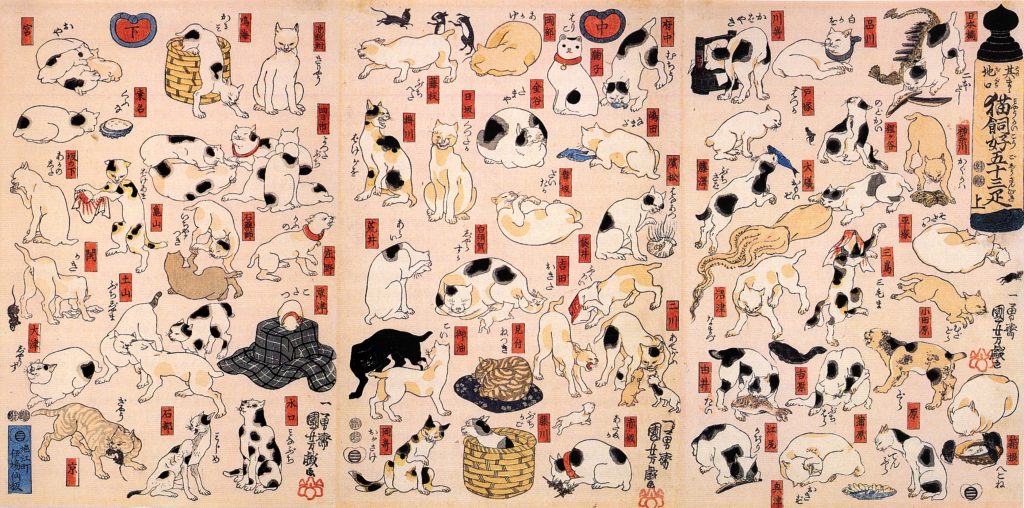
Asobi-e of cats representing the 53 stations of the Tokaido, by Kuniyoshi. Image courtesy of Wikimedia.org.
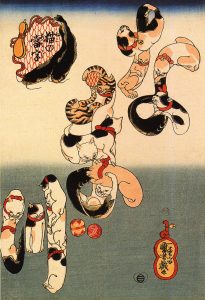
Asobi-e of cats spelling “catfish” in hiragana, by Kuniyoshi. Image courtesy of Wikimedia.org.
Select Materials on Tsuruya Kōkei:
Tsuruya kōkei mokuhangashū (Matsuyaginzabijutsubu, 1992)
Tsuruya Kokei, kabuki actor prints : the 100th anniversary of the Kabuki-za Theatre (Shōchiku Kabushiki Kaisha, 1988)
Tsuruya Kokei : the complete woodblock prints, 1978-2000 (Hiraki Ukiyoe zaidan, 2000)
Select Materials on the Shin hanga (New Print) Movement:
Shin hanga : the new print movement of Japan by Barry Till (Pomegranate, 2007)
Kawase Hasui and his contemporaries : the Shin Hanga (New Print) movement in landscape art by Irwin J. Pachter (University of Michigan, Museum of Art, 1986)
Fresh impressions : early modern Japanese prints by Carolyn M. Putney (Toledo Museum of Art, 2013)
Select Materials on the Rise of Asobi-e:
Edo no asobie / Fukuda Shigeo kanshū edited by Inagaki Shinʼichi (Tōkyō Shoseki, 1988)
Kuniyoshi Kunisada by Sarah E. Thompson (MFA Publications, 2017)
Kunisada’s Tōkaidō : riddles in Japanese woodblock prints by Andreas Marks (Brill, 2013)



